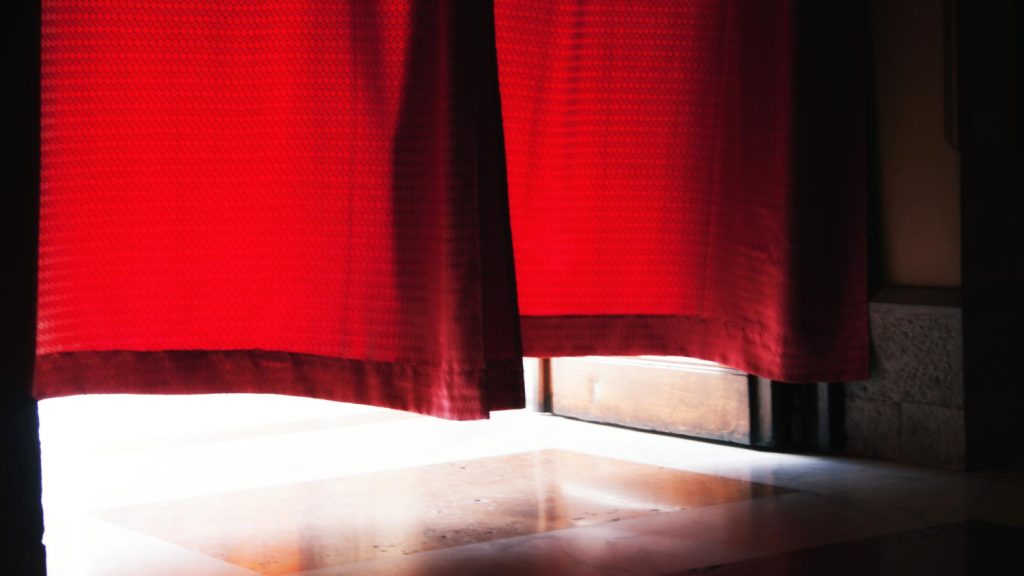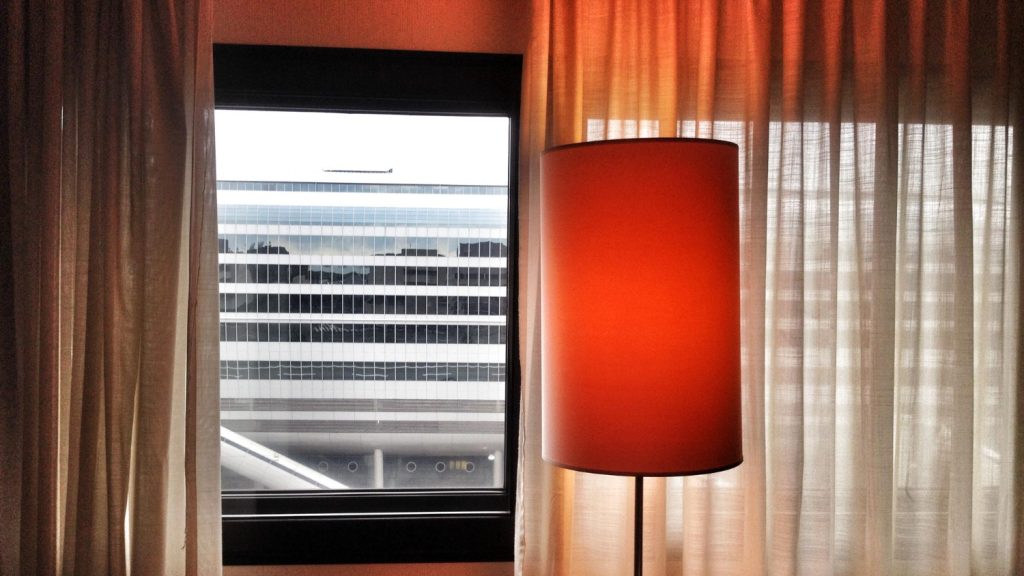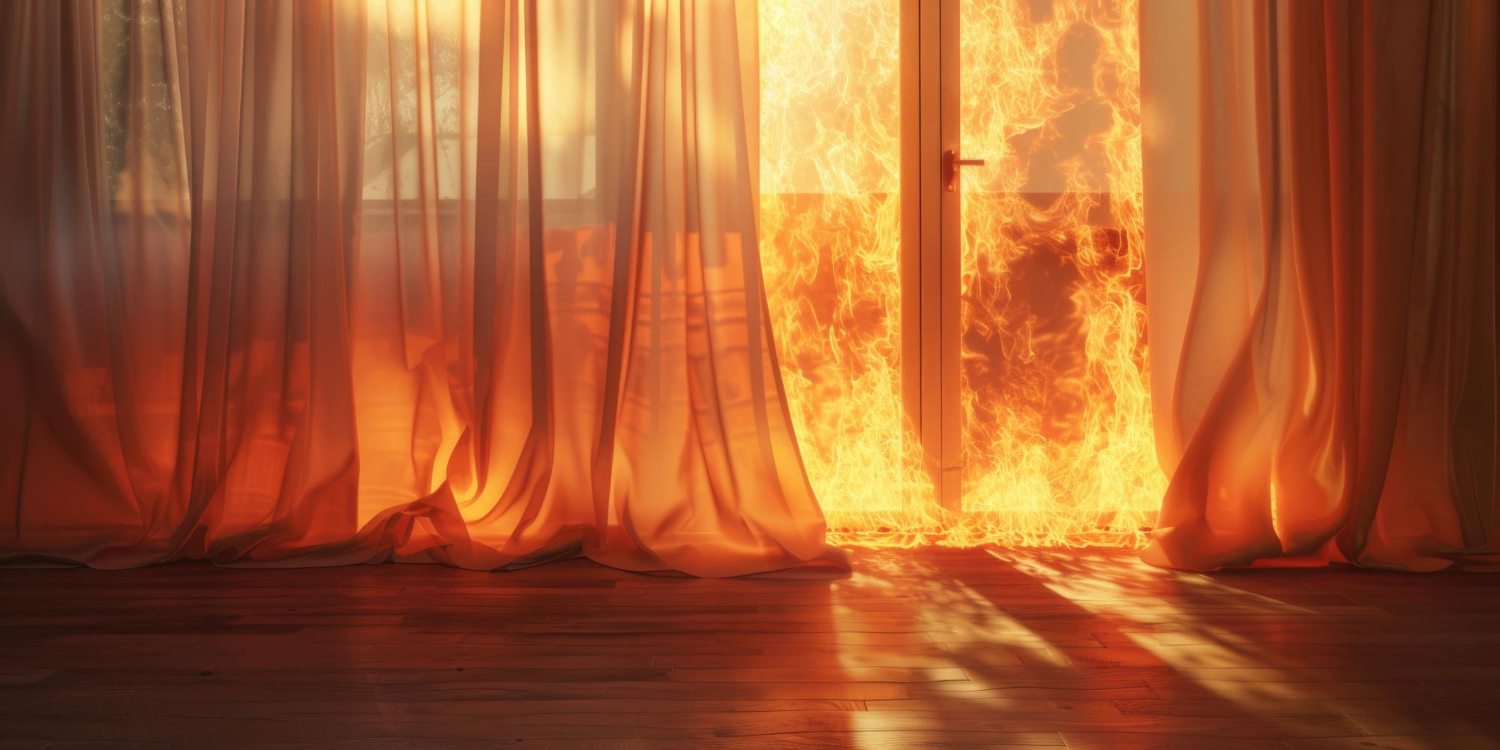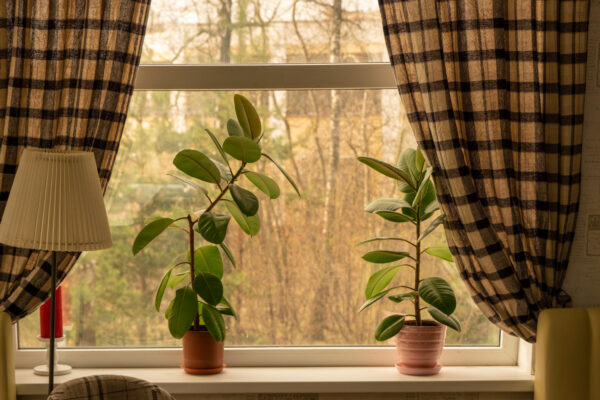Fire retardant Al Baraka Curtains
Table of Contents
- 1 Why are fire-retardant curtains needed in Abu Dhabi?
- 2 Where is mandatory or most needed?
- 3 Fire retardant, fire resistant, fireproof – the difference
- 4 Fabric type: treated vs inherently flame-retardant
- 5 Certification & safety standards in simple language
- 6 How much does it cost in Abu Dhabi (AED breakdown)
- 7 How to tell if a curtain is truly fire-retardant?
- 8 Maintenance: washing, ironing, coating damage
- 9 Where to find it in Abu Dhabi
- 10 Frequently Asked Questions❓
A fire-retardant curtain is a type of curtain that does not burn quickly in the event of a fire and helps slow its spread. Ordinary curtains spread instantly when a fire catches. Still, this curtain creates a char layer and blocks oxygen, confining the flame to a single spot. This increases the time for people to escape and reduces the risk of damage.

Why are fire-retardant curtains needed in Abu Dhabi?
Most homes and apartments in Abu Dhabi use synthetic furniture, thick curtains, powerful AC units, and gas cooking, which makes fire spread quickly. In places like rental flats, nurseries, cafe kitchens, hotel rooms, or staff accommodation, it is mandatory to comply with the Civil Defence fire safety standards, so using ordinary curtains is both a violation of the rules and an increased risk. Fire-retardant curtains increase safety by slowing the spread of fire, especially in hot, dry weather when a spark or short circuit can quickly ignite a fire.
Where is mandatory or most needed?
Fire-retardant curtains are generally mandatory in places where large numbers of people live or sleep together, or where the risk of fire is relatively high. For example:
- School, nursery, hospital, restaurant – safety standards are mandatory due to children, patients, or public gatherings
- Staff accommodation, labour camp – dense housing and cooking fires, risk of short circuits
- Stage, events, cinema room – lighting, sound system, and electrical cables are more
- At home, especially in kids’ rooms, prayer areas, and windows next to the kitchen, where the risk of fire/heat is high
In these environments, fire-retardant curtains are essential not only to comply with the law but also to save lives.

Fire retardant, fire resistant, fireproof – the difference
| Category | How it works | What happens if there is a fire? | Common use |
|---|---|---|---|
| Fire retardant | The fabric has a special chemical treatment that reduces the speed of fire. | The flame does not spread quickly, and the fabric chars slowly. | Home, School, Restaurant, Office |
| Fire resistant | The fiber itself is inherently fire-resistant (FR) and does not fade after washing or use. | It burns to ash in a fire but does not keep the flame alive. | Hospitals, Hotels, High-security commercial spaces |
| Fireproof | Fully non-combustible, designed to withstand extreme heat. | Does not catch fire even at very high temperatures. | Industrial safety, Fire doors, Laboratory |
Fabric type: treated vs inherently flame-retardant
| Category | How is it made? | What remains after washing? | Who is it suitable for? |
|---|---|---|---|
| Treated FR fabric | They apply a chemical coating to ordinary fabric. | The coating gradually wears away with repeated washing or steam ironing. | Temporary setup, events, low budget |
| Inherently FR fabric (IFR) | The fiber itself is fire-resistant, such as Trevira CS, modacrylic, and meta-aramid. | Even after washing, the FR quality stays inside the fiber and does not fade. | Long-term use: schools, hotels, homes, hospitals |
FR fabric is inherently more durable for Abu Dhabi due to the hot weather and frequent washing requirements. Treated fabric is cheaper, but its protection decreases with repeated washing, posing a long-term safety risk.
Certification & safety standards in simple language
| Standard | Which country? | What does it test? |
|---|---|---|
| NFPA 701 | USA | How quickly fabric burns and spreads if it catches fire |
| BS 5867 | UK | How long the curtain lasts after catching fire and whether it emits smoke |
| EN 13501-1 | EU | Fabric flammability, smoke production, and dripping behavior |
| Abu Dhabi Civil Defense | UAE | Whether the certificate is acceptable under local fire safety codes |
How to know if a curtain is truly “certified”
- Does the label have NFPA / BS / EN codes?
- Can the vendor provide a test report or certificate?
- Is the certificate from an accredited lab (SGS, Intertek, TUV)?
- If it is a treated fabric → is there a mention of “re-treatment after X wash”?
- Is there Abu Dhabi civil defense approval?
How much does it cost in Abu Dhabi (AED breakdown)
| Curtain type | Avg price per metre (AED) | Where is it needed? |
|---|---|---|
| Common FR cotton / polyester (ready-made) | 50–55 AED/m | Small windows, house rooms |
| Fire retardant + blackout combo (mid range) | 70–120 AED/m | Mid-size living rooms, hotel rooms |
| Inherently FR or premium fabric + custom + installation | 120–250 AED/m or more | Large windows, commercial spaces, custom design setups |
How to tell if a curtain is truly fire-retardant?
When buying a fire-retardant curtain, it is important to see some evidence rather than just relying on the seller’s words.
1. Is there a code on the label or tag?
- Standard numbers such as NFPA 701 / BS 5867 / EN 13501-1 mention
- “Inherently FR”, “Treated FR”, and “Flame Retardant Certified” should be clearly written.
- Just saying “fireproof” or “flame safe” is not enough.
2. Want a certificate
- Any genuine fire-retardant fabric has a test report
- Labs like SGS, Intertek, TUV, and Bureau Veritas usually issue reports
- If the seller can’t show a PDF or lab report, be suspicious.
3. The misconception of testing by setting fire to the house
Many people recommend testing at home with matches or lighters, but this is dangerous and completely wrong.
- House fire flames are uncontrolled compared to lab tests
- Even with chemical coatings, smoke, odors, or toxic fumes may be released.
- If the curtain completely burns out during a wrong test, you may think it is “fake” even if the fabric meets the code.
Maintenance: washing, ironing, coating damage
The safety of a fire retardant curtain depends mainly on how you clean and store it:
Machine wash or dry clean?
- Treated FR fabric: Can be washed lightly by hand, but the coating will slowly wear off with repeated machine washing.
- Inherently FR fabric (Trevira CS, modacrylic, etc): Machine washing does not damage the curtain because the fiber itself holds the fire resistance.
- Avoid using b
- leach, hot water, or fabric softener.
How many years does it last?
- Treated fabric: Typically starts to lose effectiveness after 3–5 years (depending on wash frequency)
- Inherently FR fabric: Can last 10 years or more, as there is no coating that can come off.
Where to find it in Abu Dhabi
In Abu Dhabi, shops rarely sell fire-retardant curtains in ready-made sizes because manufacturers typically make them to custom sizes, using specific fabrics and meeting safety certifications.
- Custom measurement + stitching + fitting
- The cutting and stitching are done accurately according to the window size, track type, and fabric choice. It has no gaps, and safety standards are maintained.
- Sample swatch service
- It’s important to have the opportunity to see the fabric’s color, weight, light-blocking ability, and texture in person beforehand. This is especially important for hotels, nurseries, or offices.
Our Curtains & Furniture shop in Abu Dhabi offers fire-retardant certified fabric, blackout + FR combo, and full installation service. We can help you from measurement to installation for any use, whether it’s for home, school, or commercial space.
Frequently Asked Questions❓
Depends on the fabric. Treated curtains lose their strength after repeated washing, but inherently FR curtains retain their protection even after washing.
Both are needed. If you have children, a kitchen, or a prayer area at home, FR curtains are a good option to reduce the risk.
Average 3-5 years. It wears out faster if washed frequently.
School, nursery, hotel room, restaurant, staff accommodation.
No. Fire retardant slows the spread of fire; fire-resistant fabric has the resistance built into it.
Inherently FR polyester or Trevira CS. Washable, durable, less dusty, safer option for children.
Author






